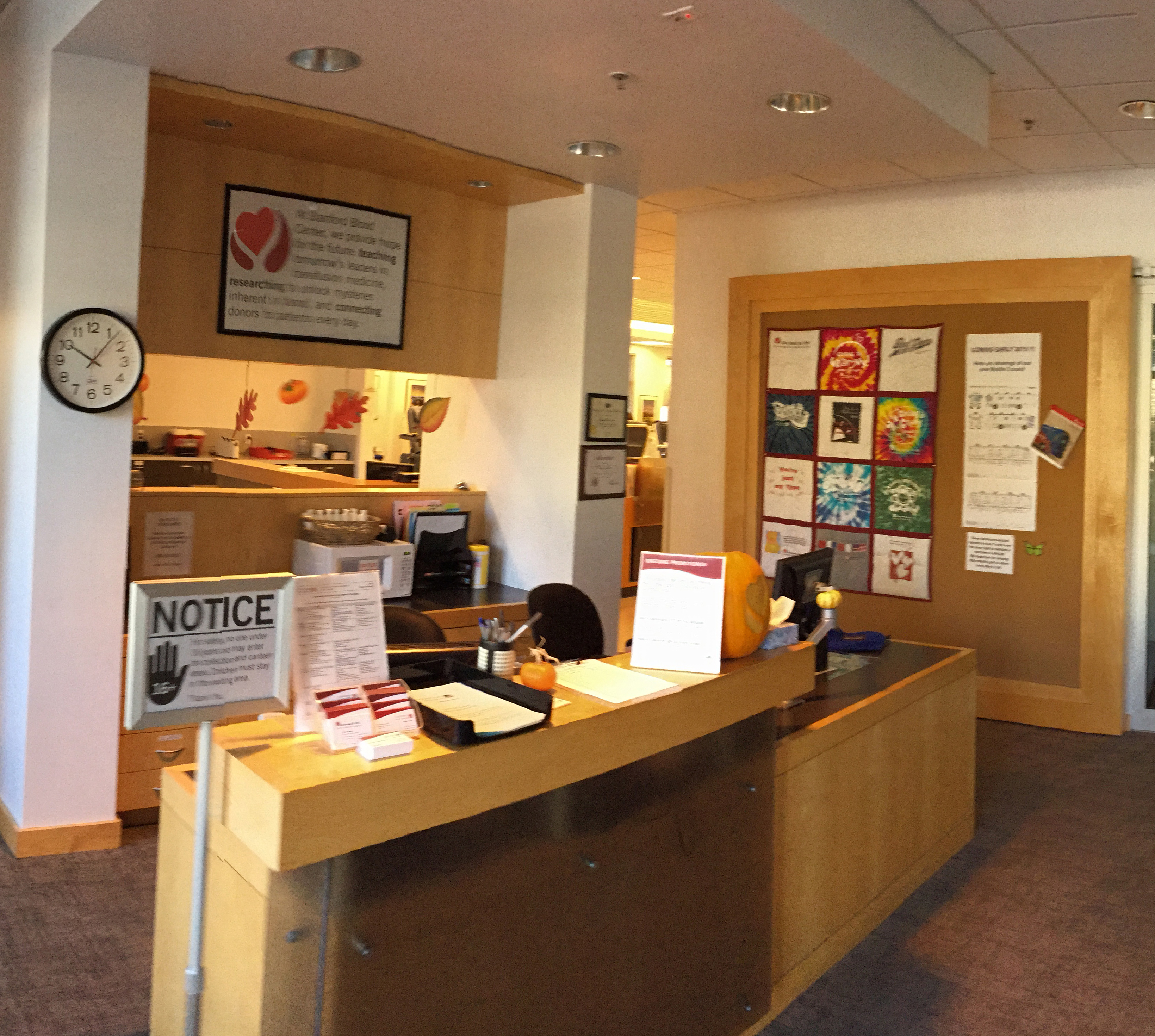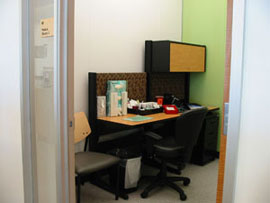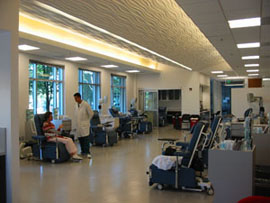The Donation Process

Signs direct donors to special blood donor parking.
There are many different ways to donate the life-saving blood products that patients depend on. The most common donation is whole blood donation, but many people choose to do Apheresis Blood Collection (ABC) or to donate marrow. Giving whole blood and doing ABC follow the same basic steps (listed below), but are slightly different.
After your blood is drawn, it goes to the testing and processing lab at our Palo Alto Center. The tests we do take about 48 hours. After that, the blood is driven by courier to one of our area hospitals. Your blood could save someone's life within a couple days of your donation!
To give blood you must be at least 17 years of age (by California law, all 16 year olds must have a parent's or legal guardian's permission to give a community blood donation by bringing a completed Stanford Blood Center Parental/Guardian consent for 16 year olds form with them to register to donate; this form can be obtained here, at a Stanford Blood Center donor center, Stanford Blood Center community blood drive, or from your high school blood drive coordinator), weigh at least 110 lbs., be in good health, and have eaten prior to donating. From start to finish, giving blood consists of four easy steps.
Please note the following SBC visitor policies:
![]() For safety, no one under 16 may enter the collection and canteen areas. Children must stay in the waiting area.
For safety, no one under 16 may enter the collection and canteen areas. Children must stay in the waiting area.
![]() For confidentiality, please refrain from taking photos, video or audio.
For confidentiality, please refrain from taking photos, video or audio.
 For everyone's safety, bicycles are not allowed inside donor centers. Please bring your own lock and use the bicycle racks outside.
For everyone's safety, bicycles are not allowed inside donor centers. Please bring your own lock and use the bicycle racks outside.

Registration desk
1. Registration
When you arrive at the blood drive or at our Donor Center, a receptionist will take your name, address, telephone number, and verify identification. At this time you will also be asked to read donor education material and fill out a Medical History Form to determine your eligibility.

Medical History Room
2. Medical History
We will take your blood pressure, pulse, temperature, and a drop of blood to test your hemoglobin level to make sure you are eligible to give blood. You will also be asked confidential questions about your medical history to be sure that the donation is safe for you and that your blood is safe to transfuse to others.

Donor Room at our Hillview Donor Center
3. The Donation
After preparing the venipuncture site, we will insert a needle. You should feel only a slight pinch. The needle is sterile, is used only once and then discarded. Approximately one pint of blood is drawn through the needle into a plastic bag. The entire whole blood donation only takes 5 to 10 minutes. There is no risk of contracting any disease from donating blood.

Refreshment Area
4. Rest & Refreshments
After the blood donation is complete, you will be asked to rest for 15 minutes and eat some light refreshments before resuming your normal activities. Most donors experience no ill effects. It is especially important to increase your fluid intake following a donation. The fluid lost in the donation is replaced in 24 hours and the red cells are replaced in 8 weeks. For this reason, you must wait 8 weeks between whole blood donations.
Post-donation
Please call our post-donation callback line at (650) 725-9968 immediately if you:
- feel that your blood should not be given to a patient;
- develop a fever after donating;
- become ill within 24 hours after your donation;
- have any symptoms within two (2) weeks of your donation; or
- are diagnosed by a physician as having West Nile, Dengue, Chikungunya or Zika virus infection.
